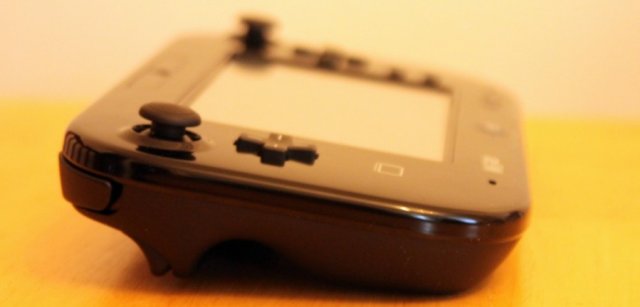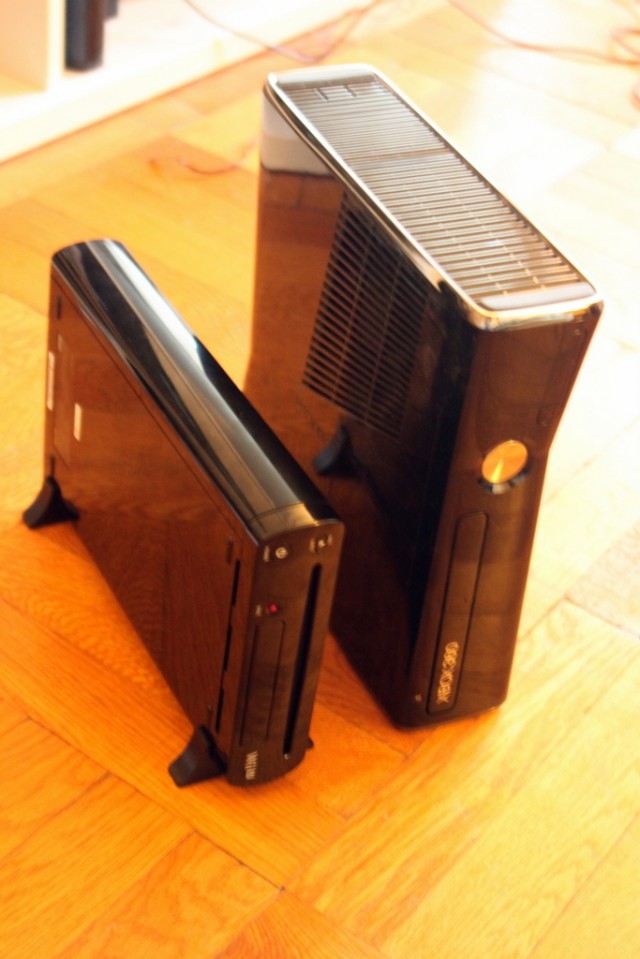
There are a lot of things I’d love to tell you about the Wii U. I’d love to tell you how the Miiverse social networking service lets you play games and exchange messages with friends. I’d love to tell you how the GamePad’s built-in camera works for video chatting with other Wii U owners all over the world. I’d love to tell you about the transfer process for content from your old Wii, or how the new system handles old Wii retail games, or how easy it is to expand the storage space with a USB hard drive, or what the sign-up process for the new Nintendo Network ID is like, or how functional the Web browser and free video apps are, or how the new eShop compares to other digital download services.
Unfortunately, I can’t tell you any of that. As of mid-day Saturday, mere hours from the system's North American launch, Nintendo had not yet pushed out a promised firmware update to activate all of these features (and maybe a few that I’m not aware of). (Note: Nintendo did push the firmware update at about 6pm CT, five hours before the company's embargo on reviews of the hardware was set to lift. We'll have reporting on the extra features as soon as we've tested them.)
As a result, this first review of the Wii U is going to be necessarily incomplete. While I can offer an extensive review on the Wii U hardware and the unique new touchscreen GamePad controller (Ars reviewed some of the system's big launch games earlier this week as well), I can't yet offer an opinion on many of the system's promised features.
Of course, we'll be sure to update our thoughts as these features are introduced post-launch. But until then, a large portion of the Wii U is best exemplified by the screen that greets me when I turn on the system: my Mii standing all alone in a vast expanse of nothingness, waiting for stuff to do.
The Hardware

One of the biggest questions dogging the Wii U in the run-up to its release was how its processing power compares to that of other current-generation consoles. Unfortunately, the verdict on that is still largely out.
One thing is clear, at least—the HD graphics on the Wii U are at least on par with those of current HD systems. I loaded up the opening cut scene for Mass Effect 3 simultaneously on both my Xbox 360 and the Wii U, switching TV inputs to compare the rendering between them. If there was any difference in the quality, I couldn’t make it out.
But if the Wii U is capable of generating graphics more detailed than those of other current systems, the launch games I’ve seen so far don’t do a great job showing that off. First-party titles like New Super Mario Bros. U and Nintendo Land capture the company’s signature bright, cartoony style, but they come across as high-definition versions of games that would have been possible on the original Wii. Third-party titles like ZombiU and Tank Tank Tank! show more detail and have more moving elements than what was possible on the original Wii, but those titles are far from out-classing complex games on the Xbox 360 or PlayStation 3. Most of the other launch titles are direct ports of games actually available on those systems. These look indistinguishable on the Wii U.
I’m willing to believe the Wii U is more powerful than the older HD consoles though, primarily because the system is also pushing a lag-free wireless image to the Wii U GamePad while it generates those HDTV graphics. Sometimes that touchscreen image is just a mirror of what’s happening on the TV, but often it’s a totally different viewpoint of the same scene, or a different scene entirely. I’d have to imagine ignoring the touchscreen altogether might actually give developers more horsepower to spend on the image being pushed to the TV.

We covered our first impressions of the physical hardware when we first got our hands on the system, but it’s worth noting again how small the Wii U is compared to even the reduced-size revisions of other HD consoles. At 1.8" high and 6.8" wide, the unit is barely bigger than the minuscule Wii when viewed from the front and is only noticeably larger when extending to the 10.5" depth. If you already have a Wii in your entertainment center, the Wii U should fit in as a fine replacement with no problem.
Nintendo has added a lot of nice small touches to the system, too. The power and eject buttons rest flush with the front of the system, making for a nice, smooth surface that is quite pleasing to look at. The cover that conceals the front USB ports and SD card slot retracts into the system, rather than protruding out when opened, to preserve those flush lines.
There’s also a small LED light to indicate when there’s a disc in the system, a head-smackingly obvious addition I hope other system makers will copy from here on out. My only real complaint with the physical hardware is that the shiny finish on my black, Deluxe system is a magnet for thumbprints. It's quite easy to smudge any time you move the system around.
Load Times
One of my first thoughts when playing the Wii U was that the games appeared to take a long time to load. Games like Just Dance 4, Madden NFL 13, and Ninja Gaiden seem to take forever to load even basic menus and scenes. But when I actually broke out a watch and compared the Wii U’s load times to launch window games for other recent systems, I found the delay was generally within historical norms.
You can see the results of my testing in the table below. The first column is the number of seconds from first loading the game to seeing the first warning message or company logo displayed by the game itself. The second number shows the total time it takes to get from the Wii U menu to the first interactive in-game menu (after skipping all skippable logos and intros). The third number is the amount of time it takes from choosing "new game" or "continue game" on the first menu to getting actual controllable gameplay. I’ll let the numbers speak for themselves.
| Game | Time to logo | Time to menu | Time to load gameplay |
|---|---|---|---|
| Nintendo Land | N/A | 25 | 12 |
| New SMB U | 21 | 27 | 7 |
| ZombiU | 14 | 35 | 54 |
| Just Dance 4 | 17 | 90 | 14 |
| Batman: Arkham City | 19 | 39 | 12 |
| Ninja Gaiden 3 | 17 | 41 | 60 |
| Mass Effect 3 | 18 | 50 | 34 |
| Sing Party | 18 | 32 | 12 |
| Epic Mickey 2 | 35 | 44 | 8 |
| Madden NFL 13 | 19 | 60 | 54 |
| Wii U average | 19.8 | 44.3 | 26.7 |
| Oblivion (Xbox 360) | 14 | 38 | 21 |
| Heavenly Sword (PS3) | 9 | 58 | 49 |
| Zelda: Twilight Princess (Wii) | 14 | 17 | 5 |
reader comments
124